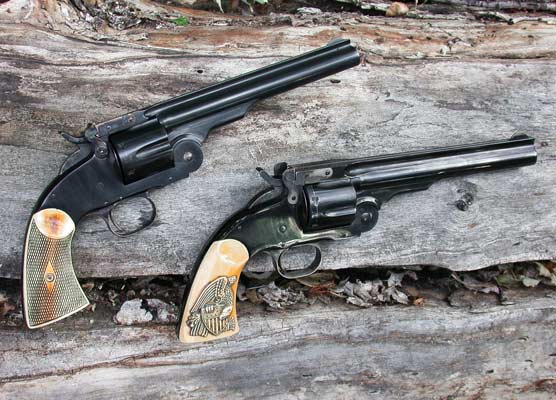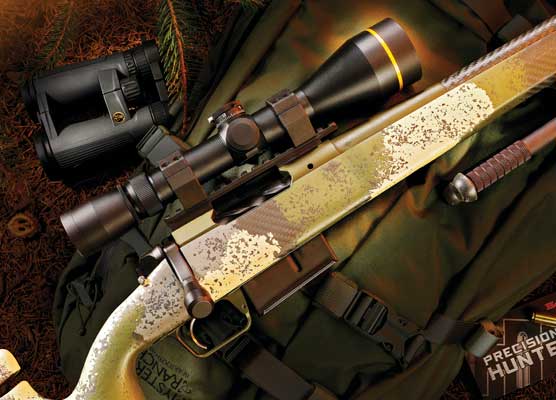Guns | Handguns |
2
By Massad Ayoob
John Browning’s Colt of 1911 was geared to the .45 ACP cartridge, which generates substantial momentum to run a heavy recoil-operated slide, and one with an overall length cartridge window of 1.275 inches (in GI ball configuration) according to the book Ammo Encyclopedia by Mike Bussard.
The 9mm Luger cartridge, which generates much less momentum to a slide so heavy the pistol it rode on was nicknamed “Old Slabsides,” is only 1.169 inches in OAL military ball format, again per Bussard. Shorter cartridge with same cycle length, less momentum to run it all… Nature is going to take its course, and interfere.
The 1911 and the 9mm cartridge didn’t meet commercially until Colt introduced them in 1950 in their lightweight Commander pistol, developed originally for a late post-WWII drive to standardize the pistols of the western world on what would become the 9mm NATO cartridge. The US military held off on this until the mid-1980’s adoption of the Beretta 92 as the M9, but Colt had development costs to recoup. The Commander was introduced in the NATO chambering, and also the .45 ACP and .38 Super, circa 1950. Commanders were a huge hit in .45, sold some in .38 Super (introduced in 1929, and developed to be close enough to OAL of .45 ACP to function reliably in the proven 5-inch barrel Government Model), and sold so few in 9mm they became valuable collectors’ items. Colt soon dropped the 9mm option, and it would be decades before they would even think of offering a 9mm in the longer, heavier Government Model to the US market.

Front-dimpled, back-shimmed and sized-down-to-gun 9mm mags by (left to right) MecGar, Dawson,
Chip McCormick, MetalForm (dimpled), MetalForm (shimmed), Wilson (polymer follower),
Wilson (metal follower), Springfield EMP sized down to its reduced frame.
The renaissance of the 9mm across the board in 1911’s came after people discovered such a pistol was incredibly mild in recoil and muzzle rise. The first Government Model 9mm I shot was in Caracas while teaching there in 1985, built by local gunsmith Alvaro Estada. The .45 ACP was pricey to come by in what was then an armed society in Venezuela, but locally made CAVIM 9mm was dirt cheap. Meanwhile, in the 1980’s, Rob Leatham and Brian Enos popularized .38 Super in compensated match pistols, and resurrecting the “Super.” The shorter 9mm round took more work. By 2000, I had made 4-gun Master in IDPA, and became the first 5-gun Master in the game in 2005, using a 9mm Colt Government tuned by Al Greco for the Enhanced Service Pistol division. It had taken Al a while to tweak the big Colt to work with the little 9mm round.

The full-size 1911 9mm combines light recoil, controllability and accuracy.
Mas shot this 60-shot timed demo using a Nighthawk Falcon 1911 several years ago.

On these two 9mm 1911 Springfield Armory pistols, the EMP (left) has a frame sized
down for the 9mm cartridge, while the standard 1911 originally meant for the .45
ACP (right) needs a magazine shimmed or dimpled to allow the shorter 9mm cartridges
to feed properly.
Lighter recoil springs allowed the big 1911 slide to function with the little 9mm. The biggest problem was getting the short cartridge to feed out of a magazine and into the firing chamber of a gun designed for a longer cartridge. If I had to shoot a match with a 1911 9mm tomorrow, I’d probably use my Nighthawk Custom Falcon. The combined genius of consulting gunsmith Bob Marvel and Nighthawk’s own Shawn Armstrong altered ejectors, feedway geometry and more to create extraordinary reliability in a 5-inch 1911 9mm.
Potential for cartridge tipping and subsequent stoppage is huge in these guns, particularly with blunt-nose 147-grain loads. Years ago the issues were addressed and the fixes came from two directions.
One, which I’ve heard attributed to Rob Leatham, was a dimple running down the front of the magazine which held the cartridges back and kept them from slipping forward in the stack as the follower brought them up between shots. The other was a shim on the opposite end, at the rear of the magazine, which kept them in line and closer to the feedway into the chamber. I came to prefer the latter, but there are people far more experienced with 9mm 1911’s who advocate each approach. Some magazine producers covered both bases: I own 9mm 1911 mags of each design marked with the MetalForm logo. Both work. Bill Wilson makes the 10-round mags I prefer and recently replaced the polymer follower with a metal one to better withstand certain types of sand, and more reliably locks slides open when empty while firing light-recoiling loads.
A third approach required a new gun: a 1911 specifically sized for the 9mm Luger cartridge. The sweet little Springfield EMP hit the market circa 2005. In 2016, I saw the new Kimber Micro 9 of similar format perform with similar reliability, so much so dealers are reportedly selling them as fast as they can get them.
Why a 9mm 1911 at all? We’ve already discussed the remarkably mild recoil. The necessarily light recoil springs make the slide very easy to rack—more so if you just cock the hammer first to alleviate mainspring tension. And, quite simply, today’s high tech 9mm police/defense ammo ain’t the feeble stuff that turned Jeff Cooper against the 9mm “back in the day.”
Purchase A PDF Download Of The August 2017 Issue Now!


